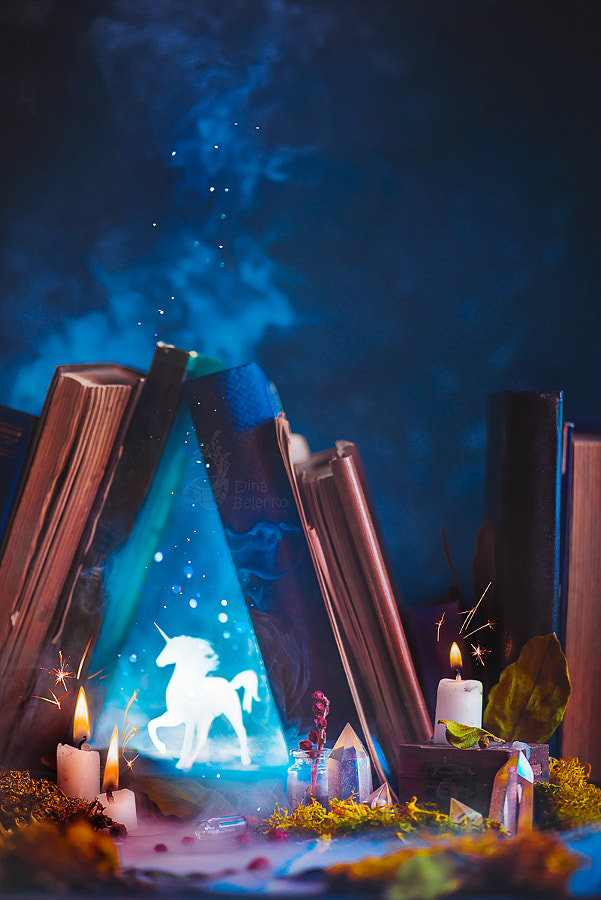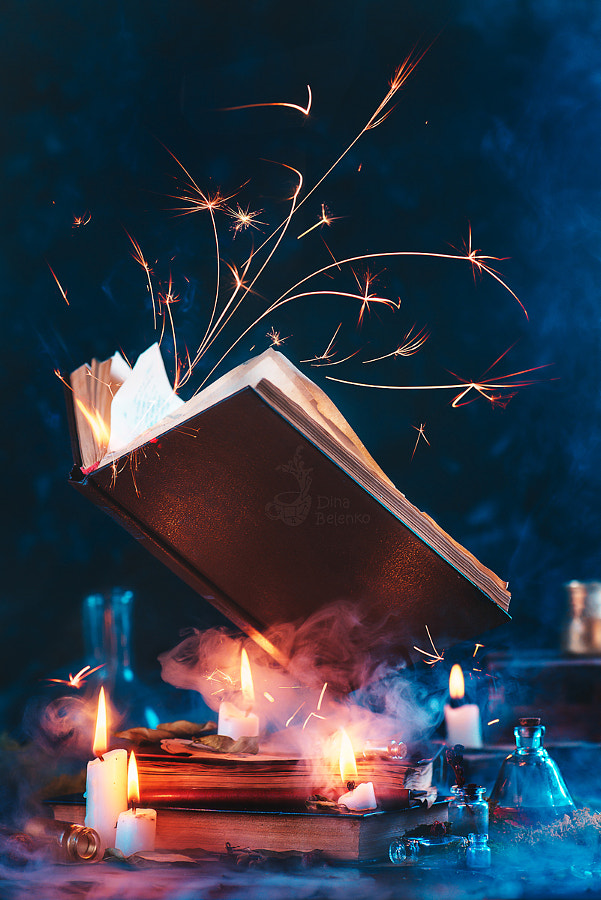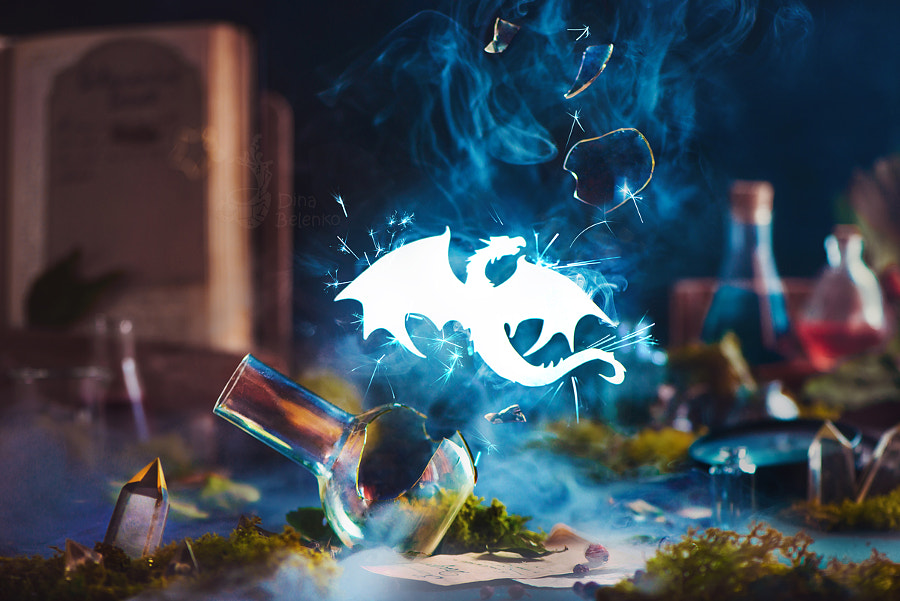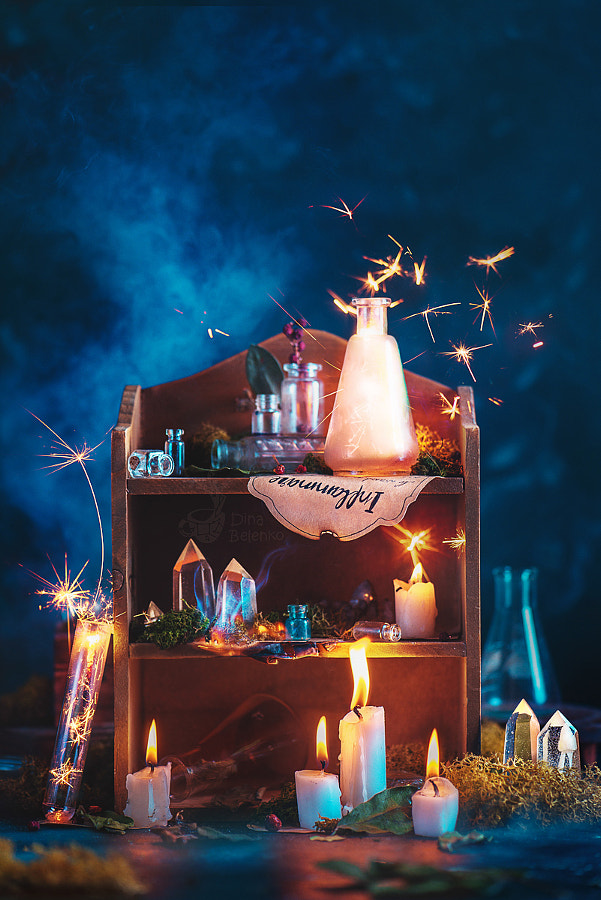I’m a still life photographer, but I like to think of myself as a person who tells magical stories about everyday objects.
The world provides more narrative opportunities than you might think. A coffee cup is pretty mundane, but that means it can help you tell any story you want. Maybe it belongs to an astronomer and reflects the stars, or a lunar eclipse. Or you may imagine it’s from an artist who distractedly put brushes and pencils in the cup. Kites or blimps could even fly by in steam clouds that rise out of it.
You don’t need extravagant props to create a fascinating still life—here are my tips for turning simple objects into magical conceptual scenes.

Embrace limited props
Magic and fantasy are more prevalent than usual in the series I’ve shared here, but most of the props I used were still books and glass bottles—nothing hard-to-find, fancy, or antique. In fact, lack of specific props is one of the challenges of still life that I find most appealing.
Without a lot props, my imagination gets to fill in the blanks! I can make a dragon with a piece of tracing paper, create a galaxy around a donut, or even invite a tiny unicorn to live on my bookshelf. With just two speedlights and a reflector, I can tell stories of outer space, magical potions, travelers, scientists, and wizards. The most interesting part is creating a fairy tale concept—all the technicalities are just algebra homework.

Always start with a sketch
The one piece of advice I’d give to anyone who wants to dive into conceptual still life is to always start with a sketch. I wish someone had told me that earlier! It allows you to think about your character and your story, to ask important questions, to add cute details.
There are many photographers that can think of an idea on-the-fly, but I’m definitely not one of them. Sketching and planning ahead is a core component of a still life photographer’s work. It also helps encourage inspiration, which, by the way, doesn’t stem from the work of other photographers. Inspiration grows from other media and your everyday life.

Look outside your wheelhouse for inspiration
We’re all compelled to seek inspiration in our own field, but what about literature and music, or podcasts and poetry? I have a photo that was inspired solely by one line of a song by The National. Open-mindedness is essential for inspiration.
Don’t limit yourself to photography knowledge: learn something interesting about biology, cognitive science, or dancing. Variety is the most reliable way to avoid creative block.

Amplify interesting details
Another important thing to help bring everyday objects to life is to get specific. Eliezer Yudkowsky calls it The Virtue of Narrowness. Think about what makes your object interesting— what about it mesmerizes you or gives you a warm and fuzzy feeling?
Let’s use a cup of tea as an example. Maybe you can see sunlight in your tea through a transparent cup. Then put it on a stack of books and shoot it in the backlight to show off its beauty.

Or maybe you like the taste and aroma? Surround the cup with spices and flowers to show your viewer how it feels like to have the flavour of these rose petals, vanilla sugar, and lavender in your teacup. Or perhaps you like it because it makes you calm and relaxed. In that case, you could combine it with a bedtime story and paper moon and stars above the steam of your tea. When you decide which specific property of the object you like the most, that detail will guide you through the rest of the process.
To me, still life is the most underrated genre of photography, so I encourage you to give it a chance. Look closely at the potential secret life of objects, their small transformations, and the subtle links between them. Still life turns you into an explorer in a world of inanimate objects.
Follow Dina Belenko
500px: 500px.com/arken
Patreon: patreon.com/dinabelenko
Instagram: @dinabelenko
Facebook: facebook.com/dinabelenko